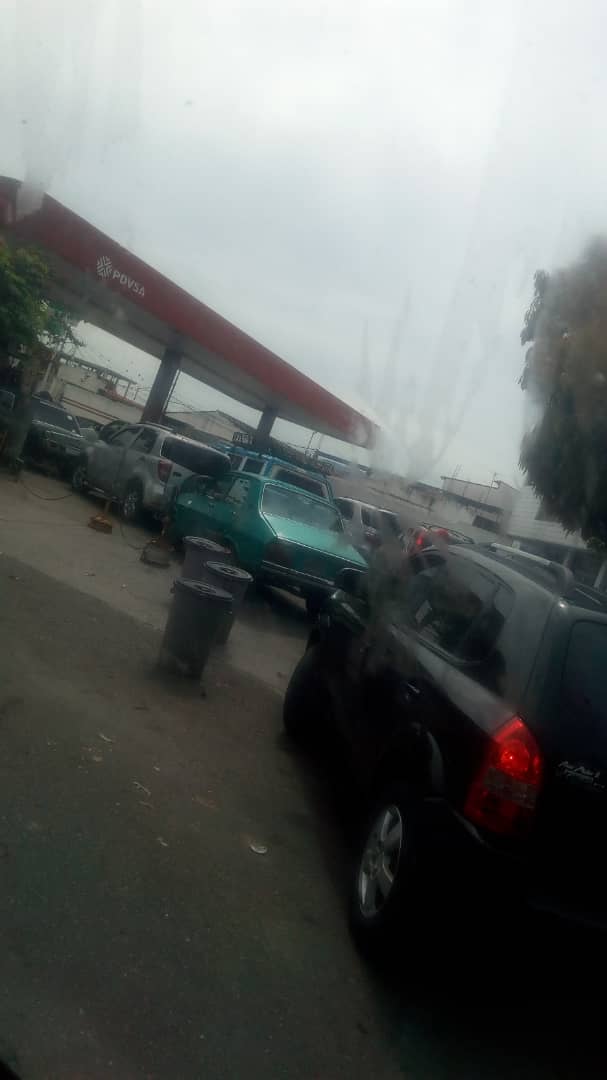A Petrostate Without Any Petrol: Gas Shortages Spread Nationwide
In Venezuela, gasoline is now, quite literally, priceless. Which is just as well, because there isn’t any.


Photo: El Estímulo retrieved.
This is the second week in a row when getting gas anywhere in the nation is a mission worthy of James Bond. It’s one thing to read about what happens in Venezuela from abroad, and another to live and breathe the desperation of today’s panic, with everyone singing the same song: Where the fuck do you get some gas?
Remember four weeks ago, when chavismo said everything regarding gas was going to be easy-peasy? Yeah, it wasn’t. The snowball effect goes like this: last August, Maduro announced a gas price increase, allegedly starting on October 1.
A month later, the price officially remains the same as last July.
Right now, the lowest denomination coin is—theoretically—the Bs.S. 0,25 (though no one has actually seen it yet). But a liter of gas costs Bs.S. 0,00006. All the cash in circulation is worth way, way more than you need, unless you’re filling a 747—which, at 183,000 liters, would cost you about Bs.S.1,100—a little under five bucks.
Gas stations have been receiving any bill people have to offer, because they can’t charge the “real” price. Often, if you find it, you can just pay the guy with the smallest denomination bill or coin you have on hand—Bs. 0,2 or 20, who cares? Many stations have stopped charging for gas altogether—why bother.
Under Maduro, gasoline has become—literally— priceless.
Maduro said he’d bring in an electronic point-of-sale based rationing system, but the vast bulk of gas stations still haven’t gotten any, so cash it is. But this is the least of your problems—the real issue is that with the price effectively now at zero, shortages are rampant.
Add rumors of an imminent gasoline production crisis to this formula for disaster, and you can’t get more tropicalmierda than that.
Under Maduro, gasoline has become—literally— priceless.
In Mérida, for example, lines outside gas stations are now common, after the imported catalyzing chemicals needed for fuel at El Palito refinery disappeared. You’ll spend an hour and a half in line (a very short time compared to fellas in Táchira), and a tired PDVSA worker will fill your tank. When you ask about the price, the guy will smile and say “whatever you have”.
Juan Carlos Gabaldón, our man in Mérida, gave the gas pump attendant a Bs.S. 5 bill, while his dad, next in line, paid with an outdated bolívar fuerte, getting twice the amount of fuel.
In Barquisimeto, local media has covered how long lines of vehicles outside of gas stations are becoming a common sight along the streets and avenues. As some drivers wait since dawn, others would rather take their chances in neighboring Yaracuy, one state away. And even so, a driver told us he had to wait at least for two and a half hours at a gas station in the Lara-Yaracuy border to get the damn fuel, in freaking oil-based Venezuela.
Another driver sent us the picture above. That’s a queue near a station in Western Barquisimeto, last Monday. It was eight blocks long. Stations only open once a gas truck arrives and, when the shipment is depleted, it closes again and waits for the next truck.
In Maracaibo, normally you just get gas for free.
“The last time they raised the gas price,” a gas station attendant told the Maracaibo press in May, 2018, “people stopped tipping us. It was a huge blow, because wages in this job are already low, and what the station is getting isn’t enough to cover the salaries.”
Earnings at gas stations are so low that the government has created a fund for the attendants’ wages. Of course, those payments are late and attendants make ends meet illegally, selling fuel on the side.
In Maracaibo, normally you just get gas for free.
Maracay, located between Caracas and Valencia, has long lines of up to two hours (or more!) at the main gas stations of the Bolívar Avenue and Las Delicias. The queues have actually been there for a while, but as the month went on, they got bigger with fuel-thirsty car owners venturing from neighboring communities.
In Caracas, last week looked like the early days of a zombie apocalypse—pandemonium, lines, stressed people and confusion. Cars honking their horns all day long and going anywhere took twice the normal time. Lines are impossible to evade, while the government keeps quiet and drivers sink in a conundrum that’s only possible in chavismo: you could keep your car at home and wait for this whole thing to blow over… but how will you get to work with our currently broken and collapsed public transport?
You can cross Caracas looking for fuel, and still have to wait for two hours. Attendants will take bolívares soberanos, bolívares fuertes, candy, bread and bananas, giving a new spin to a rather well known term.
There’s a state of befuddlement about the situation, as people adapt to their new routines without gasoline. Nicolás Maduro said on the Red Friday that inflation would be reduced, wages would be fairer and gas would be more accessible for everyone. Literally all of those goals have failed. Not only is inflation still on the rise, now everyone stares nervously at their fuel gauges, wondering what’ll happen if and when our allegorical collective tank runs dry.
The hold chavismo has on power may be stronger than ever, but infrastructure is on a downward spiral that can’t be stopped.
País potencia, no somos.
Caracas Chronicles is 100% reader-supported.
We’ve been able to hang on for 22 years in one of the craziest media landscapes in the world. We’ve seen different media outlets in Venezuela (and abroad) closing shop, something we’re looking to avoid at all costs. Your collaboration goes a long way in helping us weather the storm.
Donate





